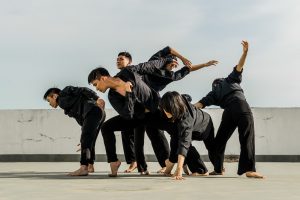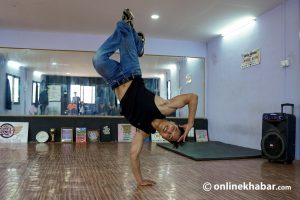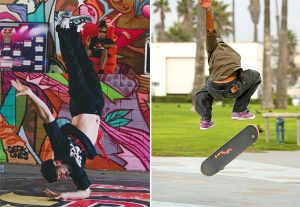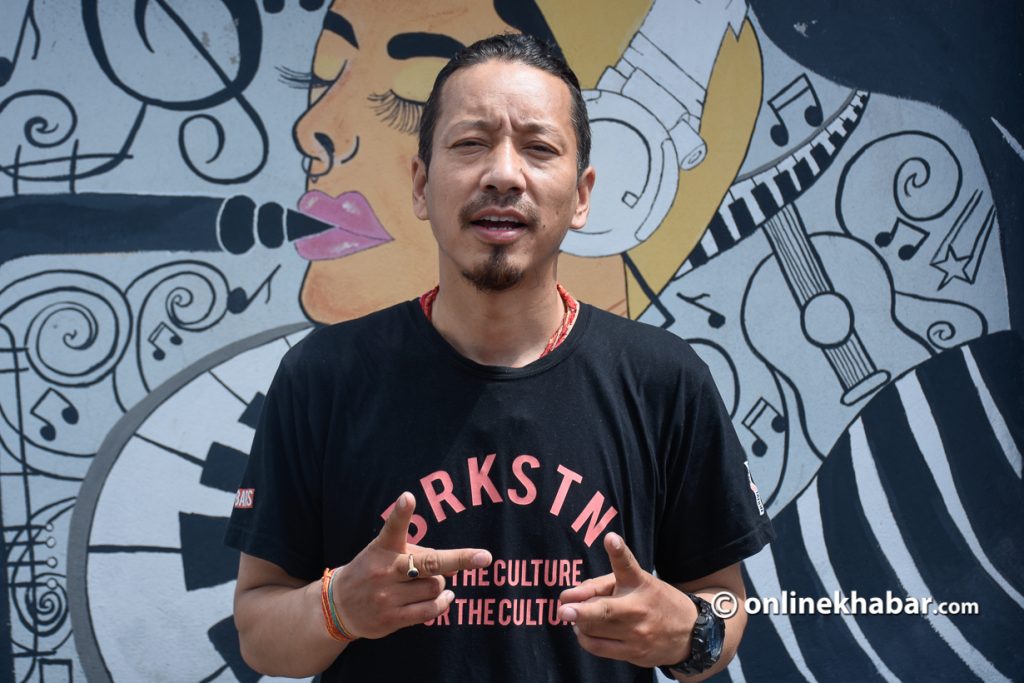
Nishanta Gauchan’s name comes on the top whenever someone talks about b-boying in Nepal. A native of Mustang, he is a first-generation b-boying artist of Nepal and has witnessed all the ups and downs of b-boying in Nepal.
It has been around 14 years since he has been active in the scene. In a recent interview with Onlinekhabar, Gauchan talks about the past, present and future of b-boying in Nepal.
The paradigm shift
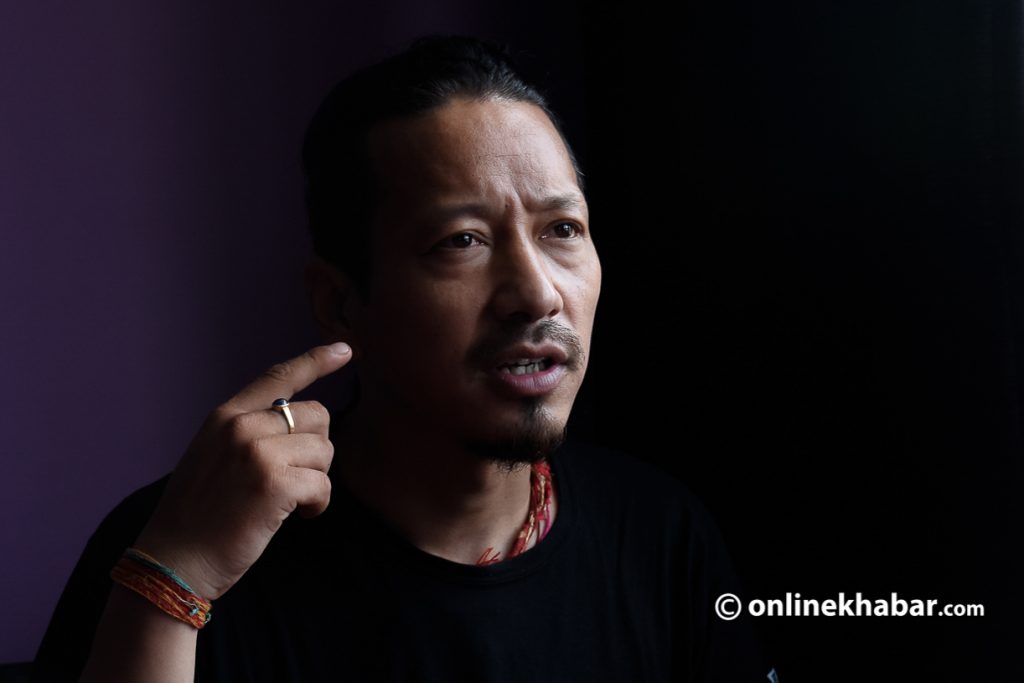
From then to now, Gauchan has seen plenty of changes in the sector. He says there are many b-boying artists in Nepal now who are great in skills and have potential. They are already preparing to compete on a global level as well. The Olympics Committee incorporating b-boying in the upcoming global gala has left him elated. As a Nepali b-boying artist has won a scholarship for the event, he says many upcoming talents will get inspiration from him.
Hence, he says, gradually, the number of local platforms for b-boying artists is also increasing.
But, Gauchan recalls the negative narrative in peoples’ minds about b-boying in Nepal. Most of them used to reckon the b-boying artists as junkies and school dropouts. However, today, there are also b-boy artists who are engineers, entrepreneurs and managers.
“Some of the people even used to call us foreigners, looking at our dressing styles,” says Gauchan. According to him, the number of b-boying artists in the country is increasing, whose number might have reached over a thousand by now.
Lately, things have relatively changed as far as b-boying in Nepal is concerned. “There are many people at present who properly grasp the dance form as an art, which is positive.”
Meanwhile, the parents have become supportive; they want their children to learn b-boying. They take their child to the dance institution that teaches b-boying. These things make Gauchan happy. He informs that the scene is also equally growing outside the Kathmandu valley in places like Pokhara, Butwal, Bhairava, Surkhet, Dang, Dharan and others.
Gauchan’s rise in b-boying in Nepal
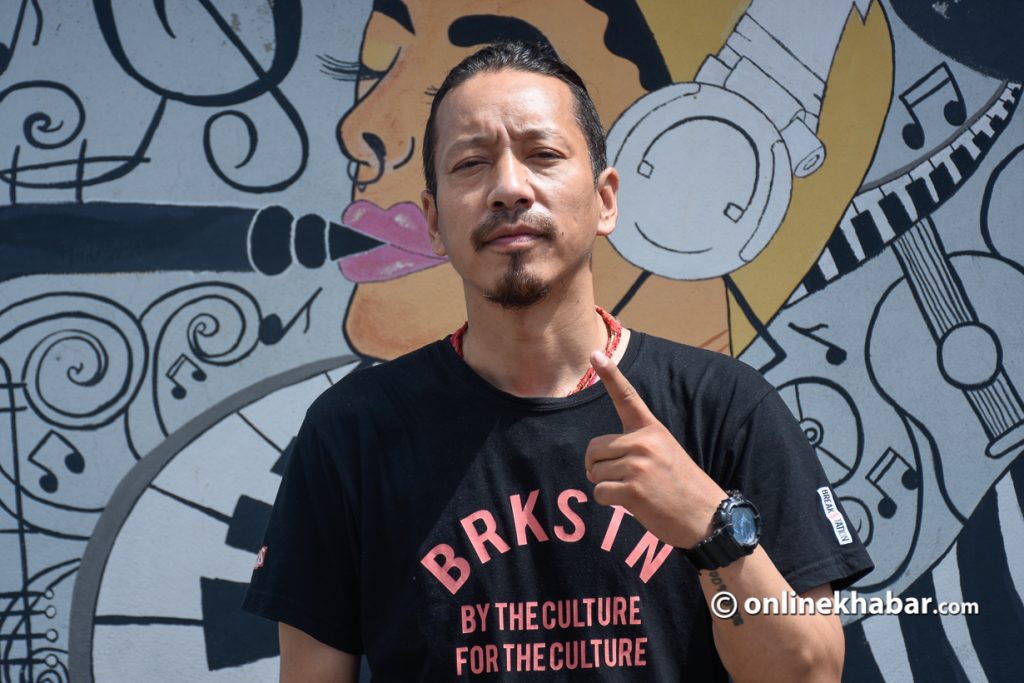
Prior to coming to the hip-hop community in the 2000s, Nishanta Gauchan was a metalhead. He would listen to death metal and black metal for the entire day.
His friend in school recommended to him an album by Dr Dre entitled The Chronic. It inspired him towards knowing more about hip-hop and b-boying.
Gauchan from his early days never wanted to do a nine-to-five job. He had a dream to be involved with any form of performing arts. Subsequently, he also used to get fascinated seeing the artist giving autographs to the fans.
He also had a goal of becoming either a British Army soldier or a pilot. He was more active in football and basketball during school days and was average in his studies.
Gauchan started dancing in 2005; he used to learn dance moves from TV. In 2008, a friend told him about the b-boying battle that was being held in the World Trade Centre. It was the first b-boy battle that ever took place in Nepal. But, due to the delay in registration, he could not participate. In another edition of the same programme, he got a chance to show his performance.
Similarly, in 2009, Gauchan and his crew went to Thailand to participate in a b-boying competition. Then, the crew had a temporary name, which Gauchan cannot recall at present time. It was the first time that Nepal went in any international b-boying competition.
The Everest crew
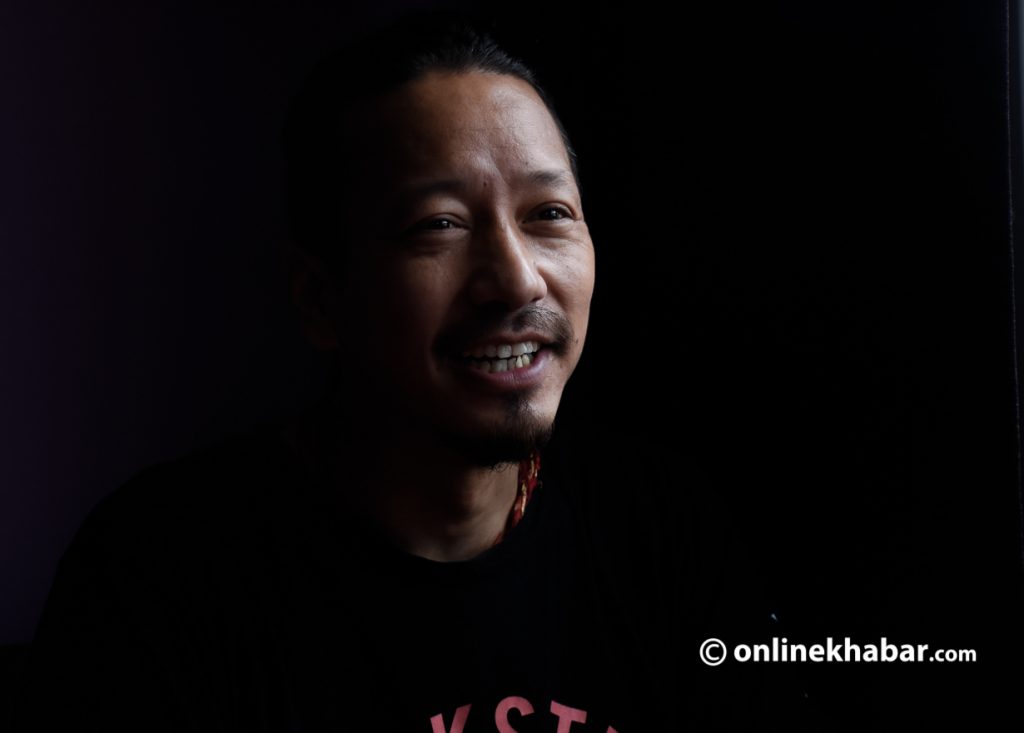
Again in 2011, the crew went to the same country to participate in Battle of the Year, which is a qualifier for the World Championship for South Asian countries. This time, they had a name for the crew — Everest Crew.
The crew wanted to be on the top of the b-boying community and they named the crew after Everest, the highest peak in the world.
“We had a great experience in both of the international events and learnt a plethora of things,” says Gauchan. “The judges in the competition also appreciated our performance, and that motivated us to move b-boying in Nepal forward,”
Currently, there are many platforms to learn various skills including b-boying, but the time was totally different back then. The internet was not accessible as of now. Gauchan and his contemporaries used to learn the moves from the mobile videos received from a friend using Bluetooth.
Likewise, they also used to purchase CDs consisting of videos related to b-boying. But, luckily, Gauchan got a chance to learn b-boying from some professionals based in Thailand.
Anup Prakash alias Mickey, who is also considered the pioneer to introduce b-boying in Nepal, hired some b-boying professionals from Thailand to train Nepali artists.
Long-lasting challenges
While b-boying in Nepal is developing quite well, there are some challenges for the ones involved in it. The key challenge is money.
Still, there has not been a condition where b-boying artists can earn enough even by dedicating their entire time to it. They are compelled to do other jobs to sustain themselves economically. Subsequently, many artists cannot afford to participate in workshops and other events.
Gauchan suggests the artists active in b-boying in Nepal can approach schools and run a class there to overcome the financial challenges. Currently, many schools hold b-boying or dance classes as a part of ECA.
Gauchan also once used to teach in schools, and save money from it to tour and participate in various events.
“Many b-boying artists around the world teach the dance form in schools or are involved in side gigs to sustain their life,” he says.
Yet, overall, he is hopeful that b-boying in Nepal is moving towards a brighter direction and it will not be as problematic as it was in the past.






